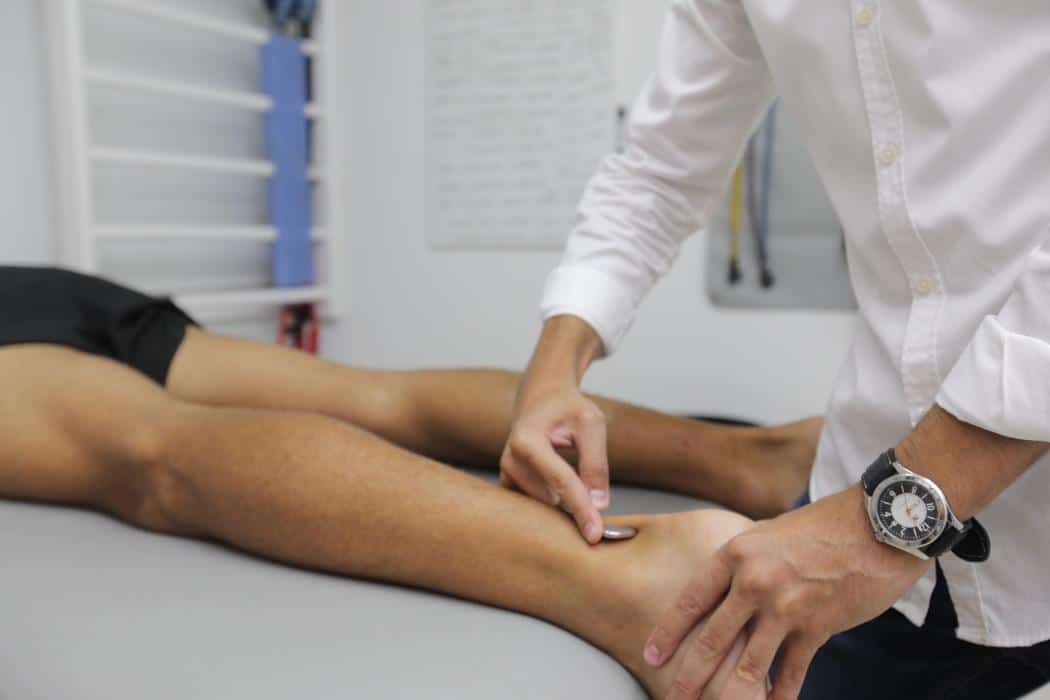What is Myofascial Release?

Myofascial release is a type of physiotherapy often used to treat myofascial pain syndrome. Myofascial pain syndrome is a chronic pain disorder generally caused by sensitivity and tightness in your myofascial tissues. These tissues surround and support the muscles all throughout your body. The pain usually comes from specific points within your myofascial tissues called “trigger points.”
This theraphy focuses on reducing pain by easing the strain and tightness within the trigger points. It’s not always easy to know what trigger point is responsible for the pain. Localizing pain to a selected trigger point is extremely difficult. For that reason, MFR is usually used over a broad area of muscle and tissue instead of at single points.
For Safe And Effective Physical Therapies and Treatments
CALL US AT (813) 392-2164
Benefits from Myofascial Release Therapy?
Patients with myofascial pain syndrome frequently enjoy this sort of therapy. People who experience chronic headaches can also find relief from myofascial release. Gently massaging on tightened muscles in and round the neck and head may reduce headaches.
Some people with venous insufficiency, which occurs when blood pools within the deep veins of the leg, can also be candidates for myofascial release. During venous insufficiency, the blood pool stretches and damages the veins in your legs eventually. You may experience an aching and pain within the affected leg. This therapy could be utilized together with other treatments to scale back the pooling and pain caused by venous insufficiency.
REQUEST AN APPOINTMENTSome people with venous insufficiency, which occurs when blood pools within the deep veins of the leg, can also be candidates for myofascial release. During venous insufficiency, the blood pool stretches and damages the veins in your legs eventually. You may experience an aching and pain within the affected leg. This therapy could be utilized together with other treatments to scale back the pooling and pain caused by venous insufficiency.

HOW DOES MYOFASCIAL RELEASE WORK?
Most myofascial release treatments happen during a massage therapy session. Some chiropractors and traditional medical practitioners can also offer it.
Your physical therapist will gently massage the myofascia and pity stiff or tightened areas. Normal myofascia should feel pliable and elastic. The therapist will start by massaging and stretching the areas that feel rigid with light manual pressure. They will then assist the tissue and supportive sheath in releasing pressure and tightness. The process is repeated multiple times on an equivalent trigger point and on other trigger points until the physical therapist feels the strain is fully released.
The areas where the physical therapist is working on might not be near where the pain originates or where you are feeling the pain most prominently. Myofascial release works the broader network of muscles which may be causing your pain. It tries to scale back tension throughout your body by releasing trigger points across a broad section of your muscular system.
Your physical therapist will gently massage the myofascia and pity stiff or tightened areas. Normal myofascia should feel pliable and elastic. The therapist will start by massaging and stretching the areas that feel rigid with light manual pressure. They will then assist the tissue and supportive sheath in releasing pressure and tightness. The process is repeated multiple times on an equivalent trigger point and on other trigger points until the physical therapist feels the strain is fully released.
The areas where the physical therapist is working on might not be near where the pain originates or where you are feeling the pain most prominently. Myofascial release works the broader network of muscles which may be causing your pain. It tries to scale back tension throughout your body by releasing trigger points across a broad section of your muscular system.
What are the BENEFITS of Myofascial Release?
Increases Blood Flow
According to research, MFR can increase vascular function. By getting eliminating knots and tension in the fascia that may be restricting fluid flow in the area, these techniques helps to keep your muscles and connective tissue well hydrated. That means that you’ll recover and heal faster.
Reduce Muscle Soreness
With better muscles and connective tissue circulation, you’ll experience less muscle soreness. This is particularly helpful if you are involved in any physical activity.
Maintains Normal Functional Muscular Length
MFR soothes tension in the myofascia network and helps your muscles return to their normal length, improving muscle function.
Encourages Movement Of Your Lymph
A main component of your immune system that helps to fight infection in the body. However, the lymphatic system depends on movement pressure to move the fluid. Self-myofascial release can promote the flow of lymph back to the heart. This means that you’ll move better, recover faster, function better and have less pain so that you can continue to be active and do what you love to do.
Who Might Benefit from Myofascial Release?
Patients with myofascial pain syndrome frequently enjoy this sort of therapy. People who experience chronic headaches can also find relief from MFR. Gently massaging on tightened muscles in and around the neck and head may reduce headaches.
Some people with venous insufficiency, which occurs when blood pools within the deep veins of the leg, can also be candidates for MFR. During venous insufficiency, the blood pool stretches and damages the veins in your legs eventually. You may experience an aching and pain within the affected leg. MFR could be utilized together with other treatments to scale back the pooling and pain caused by venous insufficiency.
Get the Benefits of Myofascial Release atThe Right Spinal Clinic
Consult with our physician if you’re curious about trying myofascial release. You may have great results with this type of back pain treatment. However, you need to be aware of the risks and potential dangers as you would with any type of medical treatment.
